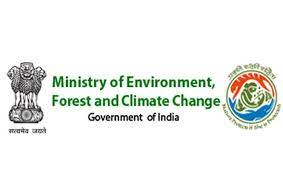
While answering a question in the Rajya Sabha, the Minister of Environment, Forest & Climate Change (MoEF&C) Ashwini Kumar Choubey said, “The MoEF&CC has notified guidelines on EPR for plastic packaging which stipulate mandatory targets on producers, importers and brand owners for reuse of rigid plastic packaging. The minimum level of recycling of plastic packaging waste and minimum use of recycled plastic content in plastic packaging has also been notified. Under the EPR, the target for rigid plastic packaging made from compostable material stands at 100 percent from the financial year 2023-24.”
|
Rigid plastic recycling (%) |
||||
|
Particulars |
Target (as percentage of rigid plastic packaging in products sold annually) |
|||
|
2025-26 |
2026-27 |
2027-28 |
2028-29 and onwards |
|
|
Rigid plastic packaging with volume or weight equal more than 0.9 lt or kg but less than 4.9 lt or kg as the case may be |
10 |
15 |
20 |
25 |
|
Rigid plastic packaging with volume or weight equal more than 0.9 lt or kg but less than 4.9 lt or kg as the case may be |
70 |
75 |
80 |
85 |
Source: Ministry of Environment, Forest & Climate Change
Compostable plastic material is considered to be environmentally-friendly since it is made from bio-based sources like seaweed, sugar beets, or other plants – instead of fossil fuels. In this case, and if sourced responsibly, these materials can offer environmental benefits. Compostable plastic material has now become a formidable substitute after the government banned single-use plastic (SUP) from July 2022.
If compostable plastic materials are not managed properly, the articles made from such materials can harm the environment. Environmentalists have discovered that if packaging materials made from compostable sources are not picked up and processed suitably then these materials do not break down as intended. Therefore, compostable plastic must be recovered in either home or commercial compost, depending on what that specific item is designed for.
Compostable packaging has the benefit that its end-of-life disposal is environment-friendly, providing the earth with nutrients once it is fully broken down. However, regardless of its benefits, all compostable packaging is required to be tested for disintegration, biodegradation, and non-toxic impact, and disposed of correctly.
|
Plastic waste recycling target |
|
|
Financial year |
Target (% of Extended Producers’ Responsibility) |
|
2024-25 |
30-50 |
|
2025-26 |
40-60 |
|
2026-27 |
50-70 |
|
2027-28 onwards |
60-80 |
Source: Ministry of Environment, Forest & Climate Change
Under the EPR guidelines, the minimum plastic recycling target is fixed at 30-40 percent for the financial year (FY) 2024-25, 40-50 percent for FY 2025-26, 50-70 percent for FY 2026-27 and 60-80 percent for FY 2027-28 onwards.
SUP ban
Manufacture, import, stocking, distribution, sale and use of problematic SUP items, which have low utility and high littering potential will not be allowed anymore. Instead, they aspire to promote compostable plastics to replace polymer-based ones. With this, the government has also enforced a minimum level of recycling of plastic packaging waste under EPR. The objective of these guidelines is to promote the circular economy of plastic packaging waste and development of recycling infrastructure for plastic packaging waste.
The government has also introduced schemes for technical and financial assistance for development of recycling infrastructure for plastic waste. Additionally, the reuse of rigid plastic packaging in food contact applications is subject to regulation of Food Safety and Standard Authority of India (FSSAI).
A defining step is taken to curb pollution caused by littered and unmanaged plastic waste. The adverse impacts of littered single use plastic items on both terrestrial and aquatic ecosystems, including in marine environments, are globally recognized. Addressing pollution due to single use plastic items has become an important environmental challenge confronting all countries.
The government has taken resolute steps for mitigation of pollution caused by littered SUP. The list of banned items includes -ear buds with plastic sticks, plastic sticks for balloons, plastic flags, candy sticks, ice- cream sticks, polystyrene (Thermocol) for decoration, plastic plates, cups, glasses, cutlery such as forks, spoons, knives, straw, trays, wrapping or packaging films around sweet boxes, invitation cards, cigarette packets, plastic or PVC banners less than 100 micron, stirrers.
The Plastic Waste Management Amendment Rules, 2021, also prohibit manufacture, import, stocking, distribution, sale and use of plastic carry bags having thickness less than seventy five microns with effect from 30th September, 2021, and having thickness less than thickness of one hundred and twenty microns with effect from the 31st December, 2022.







